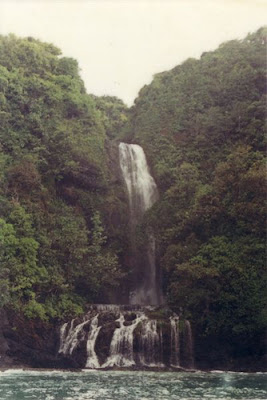Fatma Raflesia a rare flower, found on the Pangandaran Nature Park in 1961.Bunga Raflesia 15-33 cm in diameter Fatma, Fatma Rafflesia can grow on the roots and stems of host Tetrastigma Lanceolarium and Tetrastigma Papillosum.
Flower formation process begins with swelling in the roots of host plants as well as the formation of buds on the surface of the host plant roots.
The bud is starting from a diameter of several mm and then continue until the buds swell the size ± 17 cm and then the bud is as if the tear, which means flower mekar.Bunga Fatma Raflesia regular blooms in the area of Pangandaran Nature Trail during the rainy season.
Rafflesia flower's life cycle is still a mystery, he really parasitic plants. He had no stem or leaves as a tree, there are few such fibers directly penetrate the core roots of host trees. However, how the flower seeds can get into the trunk of its host, it is still a mystery.
For this Fatma Raflesia Culturing Flowers, Party deliberately membibitkan Bogor Botanical Gardens Flowers Raflesia Origin of Pangandaran, for culture developed in 2004 and till now still can be found at the Bogor Botanical Gardens.
(from various sources)
Waterfalls in Pangandaran nature reserve
One more attraction you should visit the waterfall in Pangandaran nature reserve. Better to go there there are some things to be aware of them, you should go in the morning after eat breakfast first because it would require much energy to get there. Do not forget to bring supplies of food and drink in moderation. Because it will go into the forest should spray your body with anti mosquito. Not many tourists know, if Pangandaran nature reserve has a waterfall. This is because the location must be reached by walking for 1-2 hours to reach the waterfall as high as approximately 30 meters. Where the water is immediately plunged into the Indian ocean, the southern tip of the nature reserve.
To reach this waterfall, there are two roads, the first is the path from the cave Rengganis continue down until it finds the field nanggorak to find the path that led down to the waterfall. Second way is through the ground bison, exactly west. Due to lack of tourists who visit, the path was sometimes obscured by foliage and blocked by fallen trees. So if you are without using a guide service, 100% can be lost, even if you possessed the GPS track log.
At the top of the climb, before reaching the waterfall, if you're lucky, you can see Raflesia Fatma, mini-sized corpse flower, with petals of palm seeds. And of course the smell will smell the stench, because the number of flies that settle and death rates are affected by mucus.
To get to the bottom of the waterfall, we must use the roots to go down, because the slope angle is nearly vertical. This is where we need prudence. So that we can arrive safely below the waterfall.
Large pond into a comfortable place to swim, the water quality is still very natural. Occasionally you can be flushed away with water falling into the tip. Exciting indeed, after a weary walk for 1 hour more.
Note for those of you who want to trekking to the waterfall, go through the lines suggested nanggorak and home field through the bull. With through this pathway will have a tremendous sensation.
To reach this waterfall, there are two roads, the first is the path from the cave Rengganis continue down until it finds the field nanggorak to find the path that led down to the waterfall. Second way is through the ground bison, exactly west. Due to lack of tourists who visit, the path was sometimes obscured by foliage and blocked by fallen trees. So if you are without using a guide service, 100% can be lost, even if you possessed the GPS track log.
At the top of the climb, before reaching the waterfall, if you're lucky, you can see Raflesia Fatma, mini-sized corpse flower, with petals of palm seeds. And of course the smell will smell the stench, because the number of flies that settle and death rates are affected by mucus.
To get to the bottom of the waterfall, we must use the roots to go down, because the slope angle is nearly vertical. This is where we need prudence. So that we can arrive safely below the waterfall.
Large pond into a comfortable place to swim, the water quality is still very natural. Occasionally you can be flushed away with water falling into the tip. Exciting indeed, after a weary walk for 1 hour more.
Note for those of you who want to trekking to the waterfall, go through the lines suggested nanggorak and home field through the bull. With through this pathway will have a tremendous sensation.
Subscribe to:
Comments (Atom)

